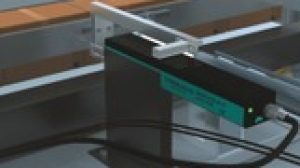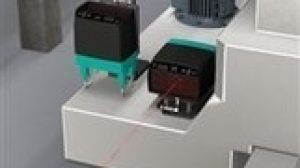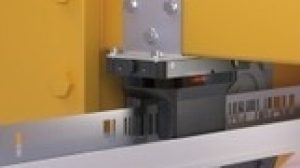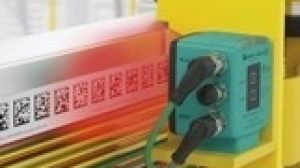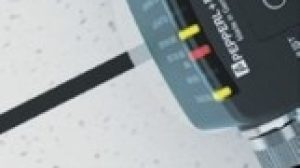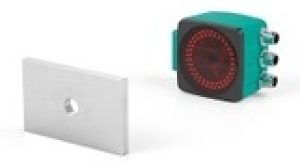Positioning Systems

Whether high precision, ruggedness, or cost efficiency: the requirements for positioning systems are diverse. To meet these demands perfectly, Pepperl+Fuchs offers a number of solutions and combines the benefits of optical, camera-based, and inductive positioning systems in one portfolio.
- Inductive Positioning Systems (PMI)—Noncontact positioning and angle measurement
- Distance Sensors—Reliable positioning for material handling
- Position Encoding System—Rugged positioning over long distances
- Camera-Based Linear Positioning—High reliability for long-distance measurement
- Camera-Based Track Guidance—Reliable navigation of driverless transport systems
- Precision Positioning—Cost-efficient, precise positioning of stacker cranes
- Electronic CAM Switch Controller (PAX)
With noncontact technology, the patented inductive positioning systems (PMI) are especially rugged. They reliably detect linear positions and angles, even in dusty or dirty environments and where there are extreme temperature fluctuations. With inductive technology, no special target is needed—only a simple, steel actuator element. The result is an unlimited range of applications, e.g., detection of crane boom position or metal part positioning in machine building. The PMI inductive positioning system is available in various designs and can be easily integrated into any application layout.
Distance sensors from Pepperl+Fuchs are based on innovative Pulse Ranging Technology (PRT) and are used for accurately positioning stacker cranes and shuttles. They are an ideal solution for material handling applications that require many articles to be transferred in a short time and for other applications such as those in automotive manufacturing or electroplating. PRT enables the distance sensors to work with high precision. Distance sensors for positioning tasks include the VDM100 and VDM28.
Smoke, dust, and temperature fluctuations have no impact—the WCS provides reliable positioning information, even at high speeds. The position value can even be reliably determined in challenging environments as it compensates for contamination by monitoring the received light intensity. The cutouts in the coding rail are practically impossible to get dirty. The absolute position encoding system detects a new position value every 0.8 mm over a large distance of more than 300 m and can transmit position values directly from the read head to the upper PLC. Due to a variety of integrated interfaces from RS485, SSI, IO-Link to EtherCAT, EtherNet/IP and PROFINET the connection to multiple PLC vendors is possible.
The PXV and PCV Data Matrix positioning systems and the safety absolute positioning system (safePXV) combine a 2-D camera system with multi-redundant Data Matrix code tape. This combination enables precise position detection and is suitable for use in warehouse and conveyor systems or lifting and elevator systems. With code redundancy and large reading windows, the Data Matrix positioning systems reliably detect position even if the code tape is dirty or damaged. With a code tape length of up to 100 km, they are also suitable for expansive installations. The safePXV enables safe absolute positioning according to SIL 3/PL e for the first time with just a single sensor.
The optical position guided vision (PGV) positioning system combines route tracking via colored tape and accurate positioning via Data Matrix codes in one device. It is an ideal solution for the reliable navigation of automated guided vehicles (AGVs), whether in material handling or automotive manufacturing applications. Due to its large reading window, PGV reliably detects colored route tracking tape and paint, even around tight curves or if tape is dirty. In addition, Data Matrix codes can be used for turning, accurately positioning an AGV, and other tasks. The safety absolute positioning system (safePGV) enables safe absolute positioning according to SIL 3/PL e for the first time with just a single sensor.
The optical PHA positioning system has been specially developed for precise positioning in high-bay warehouses. The PHA’s unique camera system uses existing drill holes in rack systems for positioning. This means no additional targets are necessary. With internal illumination and contrast compensation, PHA positions independently of interferences such as dirt, ambient light, or material fatigue. With a temperature range down to -30 °C, PHA can even be used in deep-freeze warehouses.





